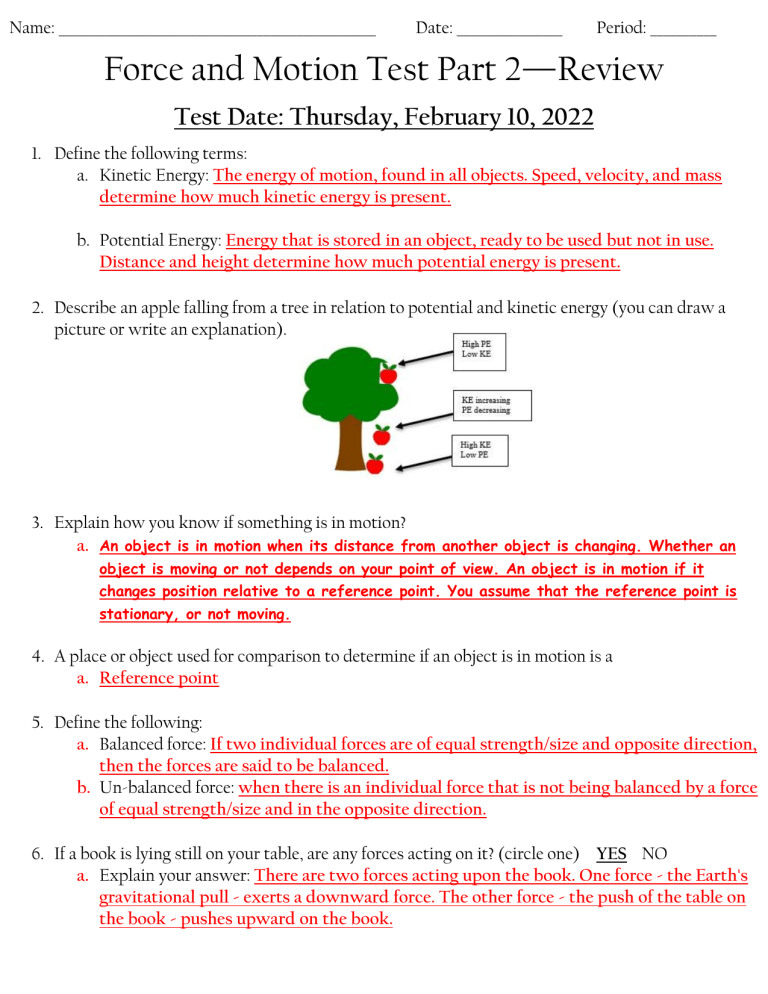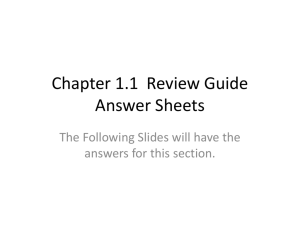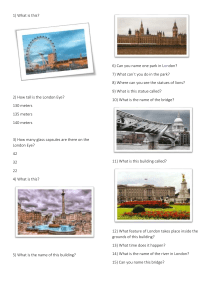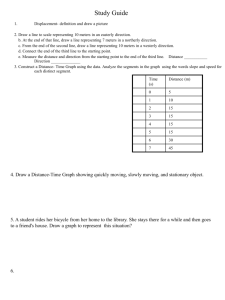
Name: ________________________________________________ Date: ________________ Period: __________ Force and Motion Test Part 2—Review Test Date: Thursday, February 10, 2022 1. Define the following terms: a. Kinetic Energy: The energy of motion, found in all objects. Speed, velocity, and mass determine how much kinetic energy is present. b. Potential Energy: Energy that is stored in an object, ready to be used but not in use. Distance and height determine how much potential energy is present. 2. Describe an apple falling from a tree in relation to potential and kinetic energy (you can draw a picture or write an explanation). 3. Explain how you know if something is in motion? a. An object is in motion when its distance from another object is changing. Whether an object is moving or not depends on your point of view. An object is in motion if it changes position relative to a reference point. You assume that the reference point is stationary, or not moving. 4. A place or object used for comparison to determine if an object is in motion is a a. Reference point 5. Define the following: a. Balanced force: If two individual forces are of equal strength/size and opposite direction, then the forces are said to be balanced. b. Un-balanced force: when there is an individual force that is not being balanced by a force of equal strength/size and in the opposite direction. 6. If a book is lying still on your table, are any forces acting on it? (circle one) YES NO a. Explain your answer: There are two forces acting upon the book. One force - the Earth's gravitational pull - exerts a downward force. The other force - the push of the table on the book - pushes upward on the book. 7. List 3 ways unbalanced forces affect an object’s motion? a. Position b. Speed c. Direction 8. What two units are needed to describe and calculate speed? a. Distance b. Time 9. How are distance and time abbreviated in the formula for speed? a. Distance: D b. Time: T 10. What is the formula for speed? a. Speed = Distance / Time 11. Morgan has a kitty named Fluff-ball. Fluff-ball usually sleeps in a cat bed 20 meters away from the kitchen and hardly ever moves. But whenever Morgan opens a can of kitty-chow, the kitten comes running into the kitchen as fast as she can. If Fluff-ball takes 5 seconds to reach the kitchen, how fast can she run? (Show your work.) S= d/t >>> S= 20m /5sec >>> S= 4 m/s 12. A car travels 100 miles in 40 minutes. What is the car’s speed? (Show your work.) S= d/t >>> S= 100mi /40min >>> 25/10 >>> 5/2 >>> Speed= 2.5 mi/min 13. What do you need to stop a baseball’s motion? a. Gravity and Friction 14. If you are playing tug-of-war with a friend, how could you win? a. By pulling with a greater force, making the forces unbalanced 15. Which axis does “Time” belong on a motion/speed graph? a. X-Axis 16. What does a horizontal line on a distance-time graph tell you about the motion of an object? a. The object is stationary (it is not moving or at rest) 17. What does the steepness of the line on a distance-time graph tell you about the (motion) speed of an object? a. The steeper the line the greater the speed of the moving object 18. What does a straight diagonal line on a distance-time graph tell you about the (motion) speed of an object? a. The object is moving at a constant speed 19. Graphs can be used to depict a story of a race. Here is a graph that represents a swimming race that occurred between 2 middle school students. a. Write a short story that describes what happened in this race. (Swimmer A:) Swam 20 meters in 10 seconds, then slowed down and swam 10 more meters in 10 seconds. Swimmer A turned around and swam back 30 meters in 10 seconds. (Swimmer B:) Swam 20 meters 20 seconds at a constant rate. Took a 10 seconds break, then swam back 20 meters in 10 seconds. in 20. In a walking experiment, Andi walked a total distance of 40 meters. She walked 30 meters from her desk in 4 seconds. She stopped for 5 seconds to tie her shoe and then walked back to her desk in 4 seconds, this time completing 10 meters. Draw a motion graph to show her speed. 21. What is the benefit of using a simple machine? a. Simple machines make work easier by decreasing the amount of force that is exerted. 22. What types of simple machines did we learn about in this unit? a. The object is moving at a constant speed 23. The longer the ramp the easier it is to do the work (circle one) TRUE FALSE




